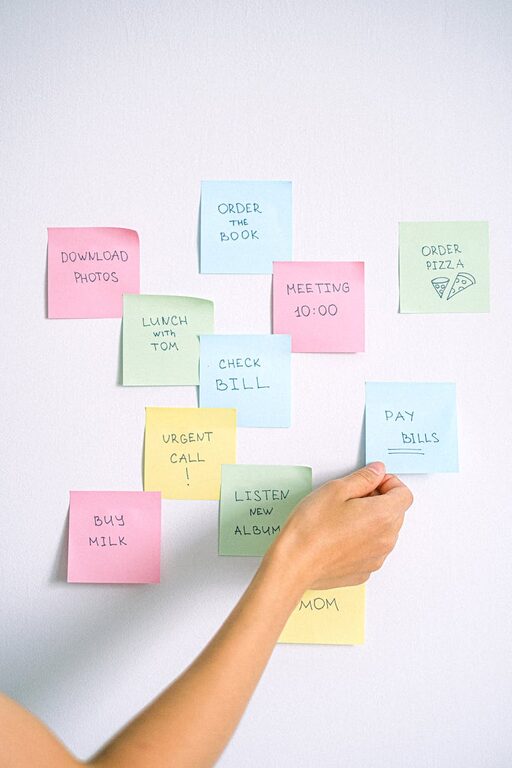Creating a family command center is a wonderful way to bring order and efficiency to your household. Whether you have young children, teenagers, or just a busy schedule to manage, a centralized spot for calendars, reminders, and essential documents can reduce stress and help everyone stay on the same page. In this post, we’ll walk you through how to set up a family command center that works for your unique needs.
What Is a Family Command Center?
A family command center is a dedicated area in your home designed to organize and display key information for the entire family. Think of it as a home base for tracking daily activities, appointments, chores, and important papers. It usually includes a calendar, message board, storage solutions, and occasionally technology like chargers or tablets.
Having a visible and accessible space ensures important details don’t get lost and that everyone knows what’s going on throughout the week.
Benefits of a Family Command Center
– Centralizes communication and scheduling.
– Helps reduce missed appointments and deadlines.
– Encourages family involvement and responsibility.
– Makes managing household chores easier.
– Creates a visual reminder of tasks and events.
– Frees up mental space by storing information in one spot.
Choosing the Right Location
Start by selecting a practical spot for your command center. It should be a high-traffic area that everyone passes through regularly. Some popular locations include:
– The kitchen, near the refrigerator or a breakfast nook.
– A hallway wall close to the front door.
– A mudroom or laundry area.
– A family room corner.
Ensure there is enough wall or counter space to accommodate your system, and easy access to electrical outlets if you plan to include tech gadgets.
Essential Elements of a Family Command Center
1. Calendar
A calendar is the heart of any command center. Choose a large, easy-to-read calendar — magnetic, dry erase, or paper — depending on your preference. Use it to keep track of:
– School schedules and events.
– Work appointments.
– Extracurricular activities.
– Family plans and vacations.
Color-code entries by family member to make it easier to spot individual commitments at a glance.
2. Message Board
Include a message board where you can pin or write notes. Corkboards, whiteboards, or chalkboards all work well. Use this space for:
– To-do lists.
– Reminders.
– Grocery lists.
– Inspirational quotes or weekly goals.
3. Mail and Paper Organizer
Lost mail and bills are a common source of clutter. Add a file holder, baskets, or wall-mounted bins for:
– Incoming and outgoing mail.
– School papers or permission slips.
– Important documents like receipts or warranties.
4. Chore Chart
Encourage family members to share household responsibilities with a chore chart. This can be a simple checklist or more detailed schedule. Make it visible and easy to update.
5. Storage Containers
Use bins, baskets, or trays to keep supplies like pens, scissors, markers, tape, and paper clips handy. Having these tools nearby prevents frustration when managing the command center.
6. Charging Station (Optional)
If your family uses multiple devices, consider incorporating a charging area equipped with power strips. This keeps cords organized and devices charged in one spot.
Step-by-Step Setup Guide
Step 1: Gather Materials
Collect everything you’ll need based on the elements you want to include. Typical supplies might include:
– A large calendar.
– Corkboard or whiteboard.
– File organizers or baskets.
– Labels and markers.
– Hanging hooks or adhesive strips.
– Storage bins.
Step 2: Prepare the Space
Clean the chosen area and remove any items that won’t be part of your command center. Measure available wall or counter space so you can arrange items optimally.
Step 3: Arrange Components
Start by mounting the calendar and message board at eye level. Arrange mail organizers and storage bins underneath or beside them for easy access. Position a desk or small table below if you want a spot to write or assemble lists.
Step 4: Personalize Your System
Make your command center inviting by adding family photos, decorative labels, or color-coordinated supplies. Have each family member choose a color or symbol for the calendar and chore charts to encourage engagement.
Step 5: Establish Usage Habits
Explain the new system to everyone in the household. Decide on routines for updating the calendar, checking messages, and managing chores. Consider a weekly family meeting near the command center to review schedules and tasks.
Tips for Maintaining Your Command Center
– Update the calendar and boards regularly to reflect new events or changes.
– Assign a family member the role of “command center captain” to oversee upkeep.
– Keep supplies stocked and organized.
– Rotate chore assignments monthly for fairness.
– Use digital tools as a supplement, not a replacement for your physical command center.
Simple DIY Command Center Ideas
If you enjoy crafting, try making your own command center with these ideas:
– Reuse an old frame as a dry erase board.
– Paint a section of wall with chalkboard paint.
– Use pegboards to hang baskets and supplies.
– Repurpose a shutter or window frame as a mail sorter.
Final Thoughts
Setting up a family command center can transform how your household functions by improving communication, accountability, and organization. With a little planning and creativity, your command center will become a helpful hub that keeps everyone informed and on track. Start small, customize as you go, and watch your family enjoy the newfound harmony.
—
Ready to get started? Pick your spot, gather your materials, and create your family command center today! It’s an investment in smoother days for everyone.

